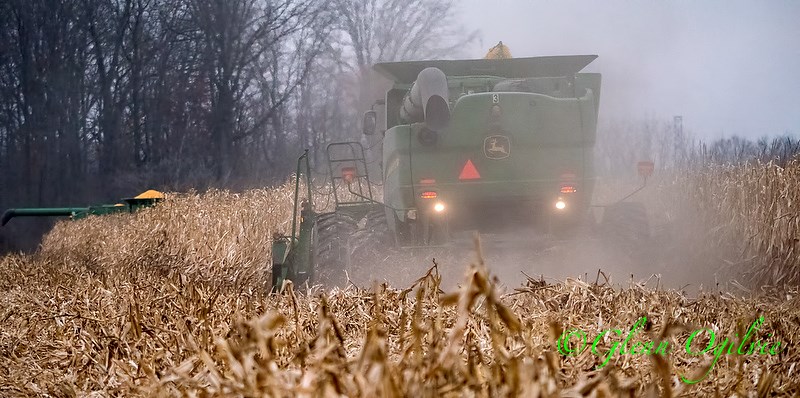Troy Shantz
Much of the corn that was planted in Sarnia-Lambton after a devastatingly wet spring is still on the field, waiting for a break in the weather.
The corn harvest is weeks behind schedule and once again it’s wet conditions hobbling farmers, says Don McCabe, the recently retired regional director of the Ontario Federation of Agriculture.
Corn requires a moisture content of less than 20% to be processed, but most of it is much higher than that, he said.
“When you’re at 40 (percent) the machinery is not equipped to handle it. That stuff is just like glue,” said the Inwood-area farmer, who added waking up to a foot of snow on the ground Nov. 12 was “gut-wrenching.”
“Bottom line, mother nature bats last.”
McCabe estimates Sarnia-Lambton producers grew about 50,000 acres less corn this year, switching to soybeans because it was the only crop that could be planted so late and still qualify for crop insurance.
An unprecedented 10,000 acres of farmland went unplanted because many fields were simply too wet. That’s about 16 square miles (40 square kilometres).
And while the rain that fell this summer did produce an excellent soybean crop it was frustratingly inconsistent, drenching some fields and leaving others parched, McCabe said.
“The soybean harvest in Lambton County is going to be miraculous numbers for some farmers, and at the same time for some it’s going to be extremely devastating. And that may be the same farmer.”
About 400,000 acres went into soybeans, up 33% from 2018.
Soybeans were already Sarnia-Lambton’s largest crop and the volume planted this year was unprecedented.
The number of fields planted in wheat fell by 65% to 30,000 acres.
“Things are certainly different because it used to be that you had long stretches to get things done. Now you’ve got maybe a few days when the weather forecast is good,” McCabe said.
“There will be crop insurance claims across the board.”
Lambton’s agricultural economy generates about $585 million annually, but the cold wet spring wiped out about $97 million, resulting in a 16.5% decrease in total farm revenue.
